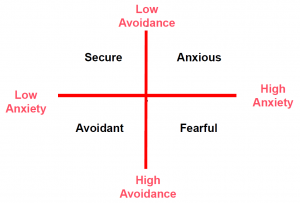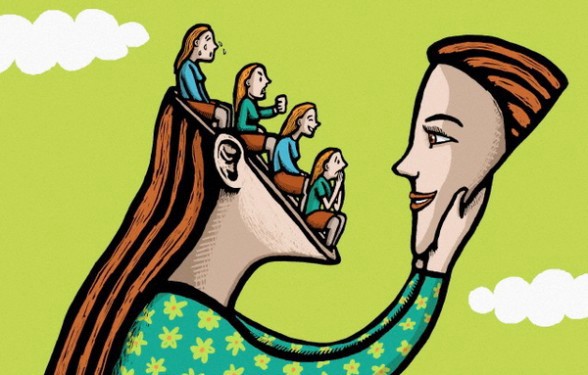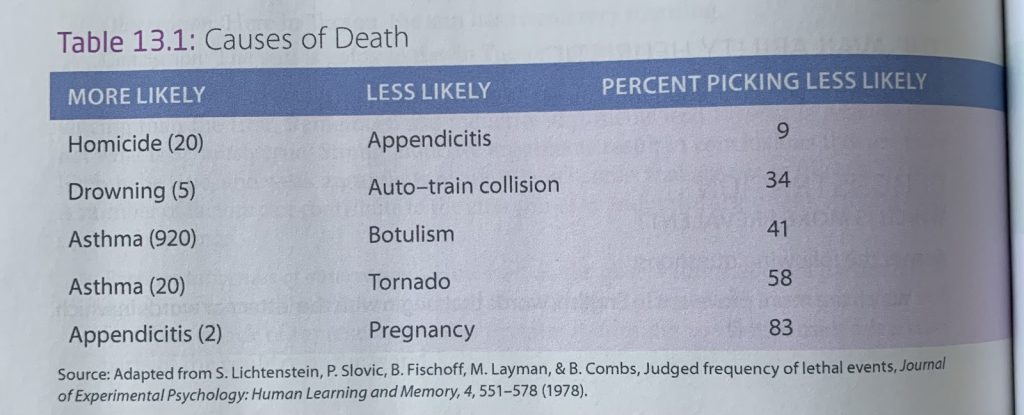ATA 5
The last assignment for this class had students take care to do at least five good deeds for different people over the course of a week. Not to sound vain, but this one was easier for me to do, as much of my time is typically spent helping those around me when I can. Nonetheless, I took more care to look out for opportunities to help when I could through the course of the week. This of course goes hand in hand with the chapter discussing prosocial behavior as found in the textbook.
This paper gave me time to reflect on my true motivations for helping people. I like to think that my typical motivation for helping others falls under the empathy-altruism definition, where the act is motivated due to the helper’s understanding of the negative feelings associated with who they would like to help. This method could be best understood as the golden rule- treat others how you would like to be treated. Being raised in an environment where community service was a weekly activity, this has been ingrained in me since childhood.
I think empathetic joy plays a large role in my motivation as well. While some think this ‘cheapens’ an act as it is done because it makes the helper feel better, I think this is a cynical take. Because we are social creatures, it makes sense to me that we are wired to help others. The positive feeling we get from helping people is likely a manifestation of this wiring. We are made to be helpers, and I think that’s really special. For instance, in the aforementioned weekly community service I would help with, I have memories of entering in a bad mood, but leaving feeling better, as I felt good knowing I had made a difference in someone’s life.

The image I chose for this assignment takeaway is an image of the chemical structure of oxytocin. Empathetic joy can release the chemical oxytocin, creating the effect known as the ‘helpers high’. This chemical also assists with intimate connection, which is why it’s typically referred to as the love chemical. Perhaps unsurprisingly with that context, I picked this up from my psychology of sex class.
ATA 4
Assignment 4 was an analysis of the Styles of Love as shown in the Hendrick and Hendrick 1986 article and questionnaire. The assignment had students take and score their own assessment, as well as discuss if they agree with the score and why they believe they scored how they did. Much like the other assignments for this class that require a level of introspection, I found this paper interesting to complete. Learning about my relationship to the seven different types was fascinating to see what I value in a relationship, which for me was agape and storge (or unconditional love and love stemming from friendship respectively). I was honestly disturbed to learn about ludus, and that it is considered a form of love. That was the one I had the least in common with, as I feel it is unfair to a partner to consider love a game to score and win. In my own life, I have dated someone who I would consider of the ludus type. That was not a healthy relationship, as his values conflicted heavily with mine. I am now with a partner that has similar values in a relationship to my own, this one is much more fulfilling and strong. Comparing these two relationships was helpful in my own understanding of what my needs in a partner are, and how to better act on it in my current relationship.

This reminds me of the attachment styles as originally conceptualized from Bowlby, where the four types of attachment are determined by the type of parent one has. The image above is the typical chart shown when researching the four attachment styles. This has been covered in a few of my classes so far in my college career. The four are secure, anxious, avoidant- fearful, and avoidant- dismissive. Each of these remind me of one or two of the Styles of Love. Secure reminds me most of agape, and storge, as those seem to be characterized by a healthy bond and mutual caring. The Anxious type reminds me of mania, as both are characterized by its fear and instability. Avoidant- dismissive is reminiscent of ludus, as there is a marked depreciation of relationships associated with this type. Avoidant- fearful reminds me again of Mania, but with some eros, as this type tends to be more reliant on a partner than the anxious type.
ATA 2
Assignment two had me take twelve images of myself and analyze what aspects of myself it showed, and how it reflects my self-concept, self-presentation, and self-control. This assignment was a really good tool for personal introspection, as well as understanding what traits I show more of through my self- presentation. When I had started the paper, I was certain that the images of me would show more of my self-concept, but the more I analyzed I realized it was a curated version of my self- presentation. For this reason, this assignment was absolutely relevant to me, as it caused me to really think about who I am, versus the image I like to project to others. It did make me consider how to better align my self-concept with my self-presentation. Previously, this was a concept I was not very aware of, and I am glad I have this tool for introspection. I would recommend others perform a similar look into the pictures they choose to take of themselves, and why.
The picture I chose for this assignment I felt was a good representation of introspection in this manner. The self-presentation could be interpreted as her face, which she is holding to reveal her inner self, or self-concept. By looking at and adjusting the mask we all have, we can begin to live more genuinely.

It is common knowledge at this point that social media has many negative effects. Much of this comes from comparing one’s life to others. The concepts brought up in this assignment such as the self-concept and especially self-presentation are directly applicable to this. When someone looks at another’s life through social media, they are seeing a similarly curated selection of images and events. The self-presentation of the social media influencers, while it may have some overlap with the self-concept, is likely not a fair representation of said self-concept. Exposure to these hyper-positive self-presentations has been known to cause depression and anxiety in people. The knowledge and understanding of the concepts of self-presentation may help these individuals.
ATA 1
The first assignment was a paper on the definitions of different heuristics and how they can be detrimental to decision-making. This assignment had me go over the section of heuristics from the textbook again, as well as do research online to find more information and examples of different heuristics. I had learned of the representativeness and availability heuristic before, however the anchoring and status quo heuristics were completely new to me. All the heuristics serve to draw effective conclusions based on patterns, similarities, and previously learned information. These conclusions are not always correct, as discussed in the paper, as this is where biases and stereotypes can arise.

Goldstein, E. B. (2015). Cognitive Psychology: Connecting Mind, Research, and Everyday Experience (4th Ed.) Wadsworth/Cengage Learning: Belmont, CA. ISBN-10: 1-285-76388-2
As previously mentioned, this isn’t the first time I have run into heuristics in my studies, my first time learning about them (that I really remember) was in my human cognition class. It only covered availability and representativeness heuristics. I was familiar with their concepts going in. What was covered in that class was how heuristics exploit the brain’s love of finding patterns and classifying things. When coming up with examples for the availability heuristic, I was reminded of a table from the textbook, for that class showing causes of death and their likelihoods, compared with a testing group’s guess on what is more likely to kill someone. I didn’t have access to my textbook for the paper, so I had to cite a different source for the information, but this chart has always stuck with me on the faults of the availability heuristic.
Heuristics are important to learn and understand because of their potential to cause biases and stereotyping. Knowing your reasoning behind a conclusion you may be drawing is important, to ensure one is not falling into the trap set by our heuristics. For example, when I was younger I assumed girls that liked makeup were always going to be stupid because that was how that trait was presented to me in media. However I of course learned over time that that trait was not representative of all girls who like makeup. The representative heuristic caused me to unfairly judge a group of people.